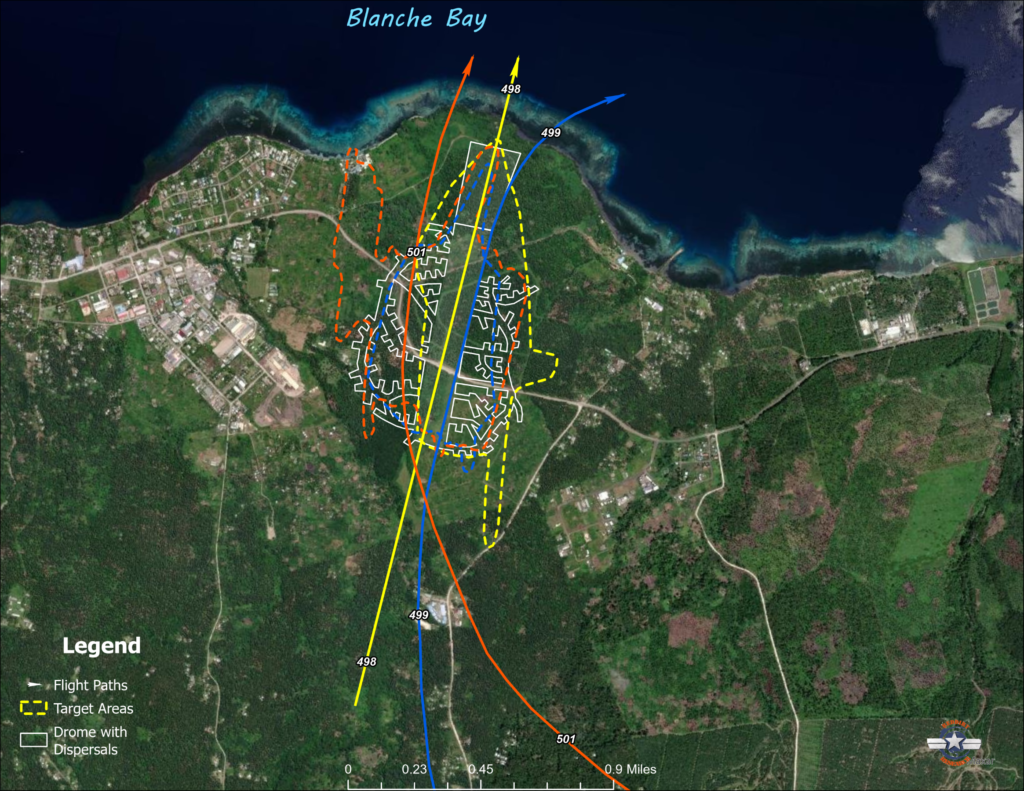On October 17, 1943, the 345th Bomb Group flew from their bases in Port Moresby, New Guinea to Dobodura in order to prepare for a mission to Rabaul the next day. After they took off from Dobodura, they formed up with the 38th Bomb Group and were joined by a fighter escort on the way over the Solomon Sea. A strong storm front was encountered but after an hour they emerged from the north side of the storm and found that their fighter cover was no longer with them. The decision was made to continue the mission unescorted by fighters.
The details of this account were taken from a report written by the 345th Headquarters group and the separate squadron reports. I considered the squadron mission reports to be somewhat more reliable since they were compiled from information supplied by the aircrews who were actually present over the target. In many ways, individuals saw events from their own perspective, so each airman fought their own war. Because of this, reports of mission results and actions can vary considerably.

The formations crossed the New Britain coast near Kabanga Bay at which time the 38th Bomb Group split off in order to perform their raid on the Tobera airdrome. The 345th continued ahead and when about ten miles south of Rapopo, the 500th Squadron broke away for their targets in Vunapope Harbor while the remaining three squadrons veered to the north and formed up in separate lines abreast in order to attack in three separate waves.
This mission was part of a grander scheme that was planned in order to destroy a large number of enemy aircraft in one day. It was expected that there would be a large number of enemy airplanes at Rapopo that would fall victim to the strafers.
The results of the raid on the Rapopo drome were: 19 airplanes definitely destroyed and 23 more probably destroyed on the ground at the airdrome.
Coming off the target, all three squadrons were intercepted by dozens of enemy fighters. The aerial battle lasted for more than twenty minutes and resulted in many enemy fighters being shot down. One B-25 of the 501st Squadron was shot down by fighters and ditched in the sea off Cape Kwoi on the south coast of New Britain, resulting in the loss of four of the six crewmen.
